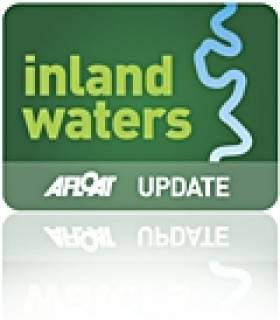Displaying items by tag: judicial review
Dublin Gazette writes, that the Bulloch Harbour Preservation Association has announced it has begun fundraising to file for a judicial review of An Bord Pleanala’s (ABP) decision to grant planning permission for a property development on Bulloch Harbour.
Earlier this month ABP granted permission to Bartra Capital Property Group to build three, three storey villas, two apartments as well as number of other buildings such as a café on the iconic south Dublin harbour.
At the time of the decision, Bartra CEO Mike Flannery said this “marks a positive day for Bulloch Harbour and Bartra looks forward to enhancing the environs of Bulloch Harbour on the back of this decision.”
However, local residents who have opposed the development since Bartra originally submitted its proposals have announced they will be attempting to file for a judicial review of the granted planning permission.
In a statement, the association said: “We have been inundated with communications by the members of the public expressing their amazement, disbelief and outrage at the findings of ABP.
For more on this coastal development click here.
#CruiseBerth - The Irish Times writes that a judicial review of An Bord Pleanála’s decision to approve facilities for cruiseships in Dún Laoghaire Harbour will be sought in the High Court on Thursday.
The campaign group Save our Seafront, which is taking the challenge, says last November’s decision by Bord Pleanála restricted the size of ships but still left open the possibility of the harbour being usurped by cruise liners.
The board granted permission to Dún Laoghaire Harbour Company for an €18 million development to build a new pier and dredge a navigation channel through the harbour mouth, as well as developing a turning circle outside the harbour. But the board ruled the size of ships permitted to enter the harbour should be restricted to 250m in length, rather than the 340m limit sought by the company.
The chairman of Save Our Seafront, local TD Richard Boyd Barrett of the Anti-Austerity Alliance-People Before Profit, said the development approved by the board could still result in a significant loss of amenity to existing harbour users. He said the board’s decision did not properly take into account the environmental implications of dredging and other aspects of the plan.
Save our Seafront is to ask the court to grant a judicial review of the decision on the basis of two points.
To read more including an Environmental Impact Study (EIS) of proposed development click here.
Minister Reaches Settlement Over Clondulane Weir
#INLAND WATERWAYS - Minister for Natural Resources Pat Rabbitte has announced that a settlement has been reached ahead of a court case over the removal of Clondulane Weir on the River Blackwater in Co Cork.
Lismore Realty Ltd and Lismore Trust Ltd has brought judicial review proceedings against the then minister over the department's direction in 2006 requiring the removal of the weird to allow for the free passage of migratory fish in line with national and European legislation.
The removal of the weir will now proceed folliwng the settlement, which terms that the parties will bear their own costs, and Lismore Realty Ltd and Lismore Trust Ltd will pay all reasonable costs of the removal of the weir, set to take place next summer.
Inland Fisheries Ireland will act as agents of the minister and manage the removal of the structure so as to minimise the impact on flora, fauna and habitat in the river, which is in a designated Special Area of Conservation.
Minister Grants Foreshore License for Corrib Pipeline
New Minister for the Environment Phil Hogan has signed off on a key foreshore licence to Shell Ireland, paving the way for the completion of the controversial Corrib gas project.
The Irish Times reports that the licence, subject to conditions, consents for the construction of the final 8km section of pipeline linking the Corrib gas field to Shell's onshore terminal at Ballinaboy. Co Mayo.
The scheme already has approval from An Bord Pleanála, and consents approved by former acting energy minister Pat Carey. But An Taisce has sought a judicial review of the planning decision, due before the High Court on Tuesday.
Still required by the developer before any work can begin are a revised emissions licence from the Environmental Protection Agency and a safety permit from the Commission for Energy Regulation under the Petroleum (Exploration and Extraction) Safety Act 2010.
The Irish Times has more on the story HERE.
- Natural Gas
- pipeline
- Corrib
- Corrib Gas field
- Corrib gas pipeline
- Shell Ireland
- Co Mayo
- Ballinaboy
- Minister for the Environment
- Phil Hogan
- Minister for Energy
- Pat Carey
- An Taisce
- An Bord Pleanála
- High Court
- judicial review
- Environmental Protection Agency
- Commission for Energy Regulation
- Petroleum (Exploration and Extraction) Safety Act 2010

































































